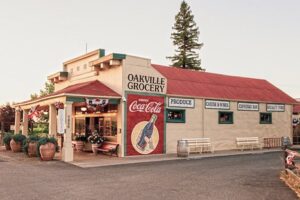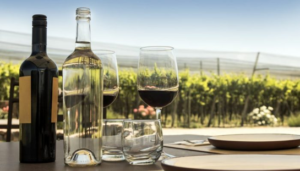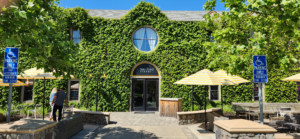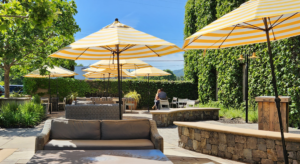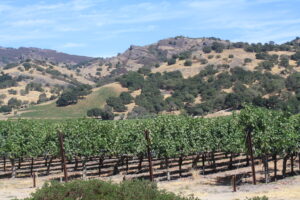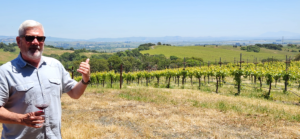We have a weakness for old grocery stores that have metamorphosed into gourmet shops serving the wine tasters who have flocked to Wine Country. There’s Lombardi’s Love Lane Market in Long Island’s North Fork. We can remember when the Dry Creek General Store was a place to buy work clothes, tins of nails and sandwiches (served only on sliced white or whole wheat). We still mourn the demise of the Jimtown Store. The grandaddy of them all is the Oakville Grocery on Route 29 and the Oakville Crossroad in Napa Valley.
Photo courtesy of Destination Wineries.
There’s an Oakville Grocery in Healdsburg and it’s a fine shop. We go there when we’re in Sonoma County. But the real deal is located, of course, in Oakville. According to their website (https://oakvillegrocery.com/) there’s been a store at that spot since some time in the 1870’s. At various times it specialized in dry goods and farming supplies; then it was called Oakville Mercantile. Since wine lovers (re)discovered Napa Valley in the 1970s, it has supplied excellent lunches to visitors and locals alike.
Oakville Grocery’s story has intersected with the wine trade over the decades. Prohibition almost put them out of business; only nearby bootlegging saved the store. It hosted a Great Chefs cooking lessons program run by Margit Mondavi, the wife of Robert Mondavi. For many years, beginning in the 1970s through 2003, Oakville Grocery was owned by Joseph Phelps, who also owned one of Napa Valley’s great vineyards. It t is now owned by a Frenchman, Jean-Charles Boisset, whose roots are in Burgundy’s Côte d’Or.
Photo courtesy of Oakville Grocery.
Today – and for as long as we can remember Oakville Grocery – it specializes in upscale fare. There’s an espresso bar where you can get freshly ground coffee. There’s a selection of imported and local cheeses, with California’s products standing up quite well against the French and Italian imports. Freshly made salads are available, as are hand-made pizzas fired where the hardware was once stored. This being Napa Valley, they also have a great wine selection.
But the main attraction is the deli counter which occupies almost the entirety of the middle of the store. Yes, you can get a ham and cheese, but why bother? You can do that at home. There’s a California-fied Muffaletta, the glory of New Orleans reinterpreted for the wine folks. How about a hot Chicken and Gruyere or Rocky’s Reuben? A word to the wise: The sandwiches are enormous, enough for sharing. It’s important to put food in your stomach if you’re going to continue wine tasting in the afternoon, but there are limits.
There is a (mostly) shaded area next to the store where you can eat and drink your purchases. They try to style it as a picnic area, but there is neither grass nor trees to be seen. Make sure to get a table in the shade – midday in Napa Valley gets quite hot – but don’t plan on lingering.
We know places in New York and Paris that are as rich in history as in cuisine. The Oakville Grocery is one of these too, but it is a great deal more rustic than those places, as it should be. This is a deli in Wine Country, after all. But if you’d like a great meal in a place your great-great-grandparents might have frequented, then the Oakville Grocery is for you.
